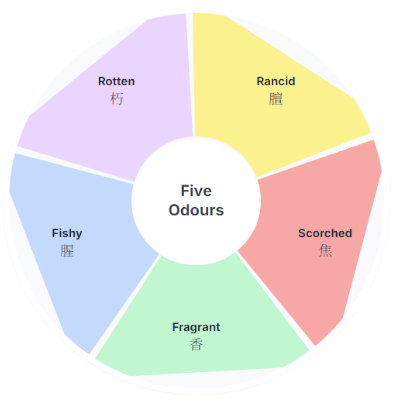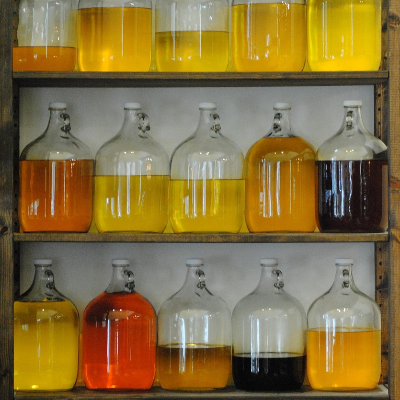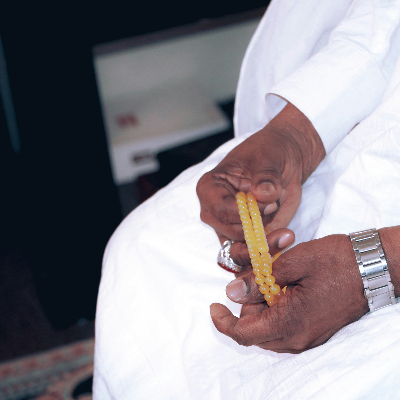The Five Odours in Incense and Their Influence on Modern Scent Crafting
Introduction: Rediscovering Ancient Aromatic Theory
In the refined world of Chinese incense culture, the understanding of fragrance extends beyond mere pleasantness. Deep within classical incense literature, such as the 陈氏香谱 (Chen’s Incense Manual), lies an ancient yet strikingly relevant concept: The Five Odours (五臭). These are not five types of desirable aromas, but five distinct categories of unpleasant or conflicting scents that incense artisans must carefully manage when crafting high-quality blends.
These odours are:
- Rancid (膻, shān)
- Scorched (焦, jiāo)
- Fragrant (香, xiāng)
- Fishy (腥, xīng)
- Rotten (朽, xiǔ)
This classification is not meant to degrade certain materials, but rather to develop a refined understanding of scent balance, purification, and transformation in the pursuit of aromatic harmony.
Historical Context: A Philosophy of Odour and Order
The concept of the Five Odours first emerged from early Chinese cosmology and medical theory, where balance and transformation were key principles. Incense was not merely an aesthetic or spiritual tool; it was viewed as a material expression of nature’s harmony.
In Chen Jing’s Incense Manual, these odours are referenced as the five core scent tendencies, which can either complement or ruin an incense blend depending on how they are handled. While 香 (fragrant) seems positive, even it, when overpowering or unbalanced, can lead to sensory fatigue or artificiality.
The inclusion of “fishy” (腥) odour under sandalwood, as the text implies, reflects the raw animalic or marine notes sometimes present in untreated wood oils or resinous barks. This perspective might seem unusual by modern standards, but it showcases the profound olfactory literacy of incense masters in antiquity.
Contemporary Relevance in Incense Making
1. Understanding Raw Materials
Many natural ingredients used in incense: woods, herbs, gums, and spices, possess volatile or conflicting base odours due to their biological origins. For example:
- Rancid (膻): Often found in animal-derived fixatives like musk or in aged, poorly stored fats.
- Scorched or Burnt (焦): Appears when materials are overheated during drying or improper distillation.
- Fishy (腥): Can come from certain plant oils or marine resins.
- Rotten (朽): May result from fungal contamination, fermentation, or degradation of organic matter.
Even prized materials such as agarwood (沉香) or sandalwood (檀香) can develop these characteristics if they are not correctly harvested or processed.
Rancid (膻 shān)
Historical meaning: In classical Chinese texts, 膻 described the strong smell of goat fat or musk. In incense, this category covered animalic, fatty, or sweaty notes.
Examples in incense:
- Natural musk (麝香)
- Civet paste
- Certain resins aged improperly (especially if mixed with animal binders like ghee or butter in Indian traditions)
Treatment:
- Prolonged air drying and storage to mellow
- Soaking in floral waters, tea, or alcohol
- Mixing with camphor or borneol to “lift” the heaviness
Scorched (焦 jiāo)
Historical meaning: 焦 literally means “burnt” or “scorched.” This was not a natural odour of the plant but a processing defect, such as overheating, charring, or overcooking of ingredients.
Examples in incense:
- Over-roasted agarwood powder
- Burnt herbs or over-fired resins
- Honey or sugar used as binders caramelising and producing harsh smoke
Treatment:
- Strict temperature control during drying
- Using indirect heat (charcoal buried under ash) rather than direct flame
- Combining with cool, sweet woods (like sandalwood or aloes) to rebalance
Fragrant (香 xiāng)
Historical meaning: Although 香 is “fragrance,” in the Five Odours system, it refers to a fragrance that is too obvious or aggressive. This is “fragrance” that has gone out of harmony.
Examples in incense:
- Overuse of clove or cinnamon (overpowering spice notes)
- Excess perfuming with artificial oils in modern sticks
- An imbalance where top notes dominate but no base supports them
Treatment:
- Diluting strong spices with neutral carriers (e.g., sandalwood powder)
- Ageing to soften sharpness
- Using fixatives like ambergris, benzoin, or frankincense to bind volatile molecules
Fishy (腥 xīng)
Historical meaning: 腥 in classical Chinese meant the smell of raw meat or fish, but also oily or marine-like undertones. It marked a category of scents that had a living, slightly animalic energy.
Examples in incense:
- Raw or freshly cut sandalwood (檀香)
- Some grades of agarwood oil with a “barnyard” or “marine” note
- Shells, coral powders, or sea-related ingredients used in ritual incenses
Treatment:
- Extended aging (陈放) to allow oils to oxidise and mellow
- Low-heat steaming with herbs (like patchouli, vetiver) to absorb marine notes
- Mixing with warm spices (clove, nutmeg) to transform the base tone
Rotten (朽 xiǔ)
Historical meaning: 朽 described decay or rot. This could happen to woods, herbs, or resins stored improperly, leading to fungal or musty notes.
Examples in incense:
- Mildewed agarwood or sandalwood chips
- Old powders contaminated with moisture
- Spoiled binders like honey or fruit pulp in kneaded incense balls
Treatment:
- Sun-drying and re-drying with rice or salt packs
- Discarding compromised material (in serious cases)
- Blending with strong cleansing aromatics like frankincense, pine resin, or camphor
Historical Symbolism: Why the “Five Stinks”?
In Chinese cosmology, all things had yin-yang and five-element associations. The Five Odours were not just sensory categories but part of a larger system of:
- Five tastes (sweet, sour, bitter, spicy, salty)
- Five colours (blue, red, yellow, white, black)
- Five notes in music
The Five Odours thus represented the complete olfactory field, from the most refined to the most gross. Mastering incense meant mastering balance, not just picking pleasant smells.
Modern Relevance: Transforming “Defects” into Depth
Many artisan incense makers today unknowingly repeat these ancient practices:
- Aging woods like agarwood or sandalwood for years before grinding.
- Double filtering oils to remove animalic residues.
- Low-temperature drying of herbs to prevent scorching.
- Using fixatives (like benzoin or labdanum) to smooth volatile spikes.
The Five Odours are essentially an early quality-control framework. They teach us:
- Where undesirable notes come from.
- How to neutralise or transform them.
- How to create incense with depth, harmony, and evolution over time.
Why These Odours Matter
In modern incense crafting, especially in high-end natural blends or traditional Kōdō (香道), unbalanced odours are considered disruptive. They distort the profile and weaken the subtle layering of aromas, reducing the contemplative or therapeutic value of the incense.
Summary of Solutions and Techniques: Treating the Five Odours
Historical texts and modern practice provide several techniques to suppress, transform, or harmonise these odours. As mentioned above, there are four ways to treat these materials before making incense:
A. Sun and Air Drying (晒干 / 通风)
Used to reduce excessive moisture, mildew, or fermentation odours. Especially useful for:
- Rotten (朽)
- Rancid (膻)
B. Soaking and Ageing (泡洗 / 陈放)
Ingredients are soaked in alcohol, salt water, or tea liquor to draw out unwanted compounds, then aged for months or years to mellow and blend volatile notes. This is standard practice in Chinese medicine and incense preparation. Effective for:
- Fishy (腥)
- Rancid (膻)
- Scorched (焦)
C. Combining with Harmonising Agents (和香)
Adding natural materials with cleansing or absorbing properties, such as:
- Clove, borneol, or camphor for deodorising
- Patchouli or vetiver to ground excessive top notes
These harmonisers not only neutralise sharp smells but also extend the burn profile and deepen the bouquet.
D. Slow Low-Heat Drying (阴干)
Prevents over-roasting, protecting delicate oils from becoming scorched. Essential for resinous woods and barks. Applies to:
- Scorched (焦)
- Fishy (腥)
Case Study: Sandalwood and the "Fishy" Note
In the Chen family’s incense compendium, it is noted that sandalwood can possess a fishy (腥) undertone. This might shock modern perfume enthusiasts who associate sandalwood with creamy, woody elegance.
However, raw or poorly dried sandalwood (especially from young trees or processed with excessive water) may release amino acid or fatty odours that resemble fishiness. Experienced incense makers address this by:
- Aging the wood for at least 3–5 years
- Heat-curing or soaking it in floral waters
- Combining with benzoin or frankincense, which mask and transform the base tone
Thus, sandalwood’s fishiness is not a flaw, but an aromatic stage that requires skill to elevate.
Embracing the Five Odours as a Path to Mastery
Rather than avoiding these five odours, traditional incense philosophy teaches us to understand and work with them. The “five stinks” are in fact gateways to transformation. By identifying, respecting, and correcting these odours, the incense artisan walks the path of balance, refinement, and olfactory artistry.
As you blend your next coil or knead your next incense ball, remember: true fragrance arises not from perfection, but from purification.




